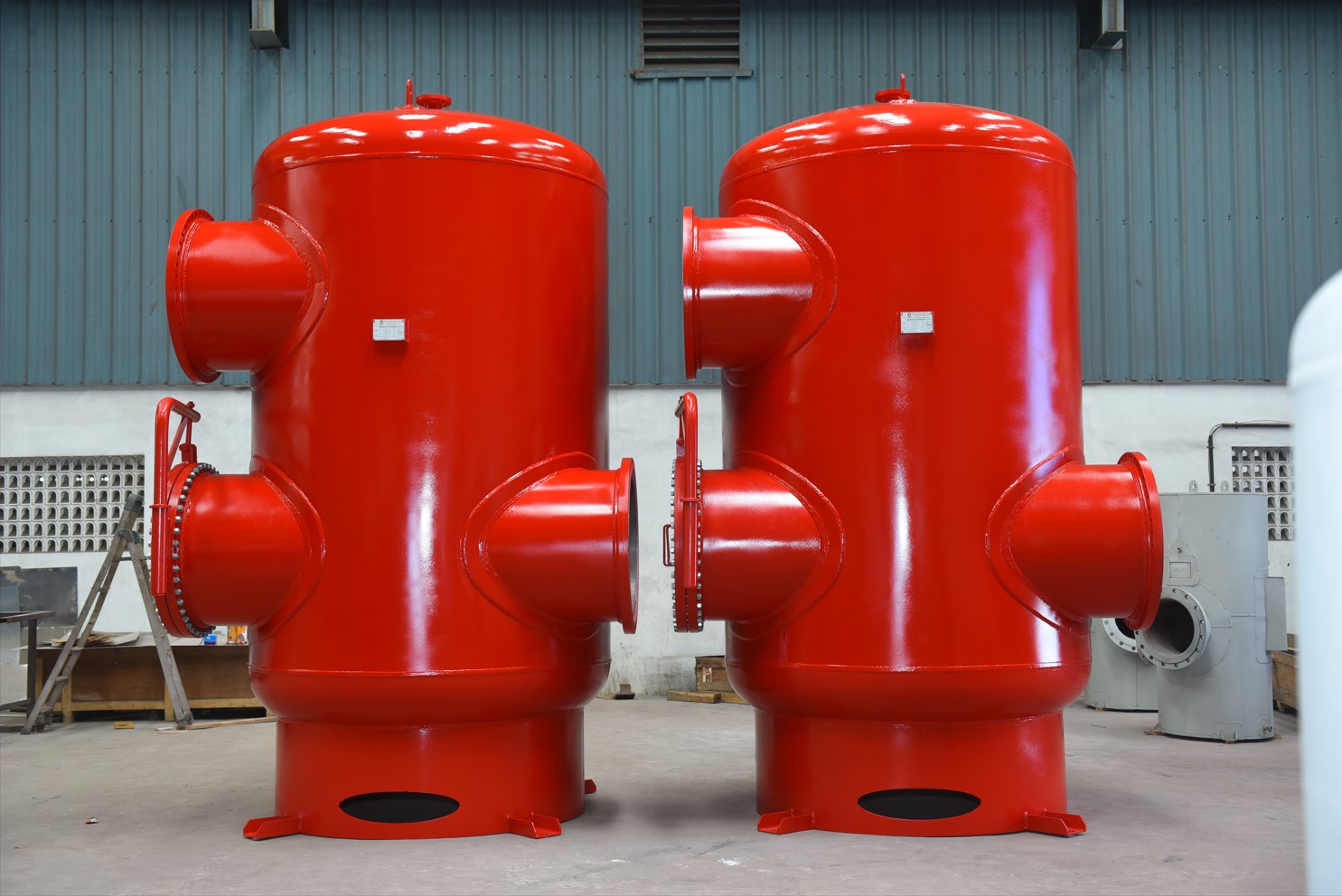
Air separators in Dubai remove entrained air from hydronic and industrial fluid systems. They reduce noise, prevent corrosion, and protect pumps and meters across HVAC and process plants.
TL;DR
-
The air separators in Dubai improve system efficiency, reduce maintenance, and are available from local suppliers offering supply, installation, and after-sales support.
-
Choose tangential or air-and-dirt types based on bubble size and sediment needs.
-
Look for ASME-certified vessels and local commissioning services in Dubai.
Why trapped air is a problem in Dubai systems
Trapped air harms performance and shortens equipment life. Air causes noisy radiators, pump cavitation, inaccurate flow readings, and accelerated corrosion.
Removing air stabilizes temperature control and lowers energy use. That improves occupant comfort and reduces operating costs.
Types of air separators used locally
Dubai projects commonly use two main types: tangential and air-and-dirt separators. Each type serves different system needs and particle sizes.
Tangential air separators
Tangential separators spin flow to coax air into a vortex core. This method removes microbubbles and vents them at the top port.
Use case: Hydronic heating and chilled water systems where continuous microbubble removal is needed.
Air and dirt separators
Air and dirt separators combine bubble removal with sediment capture. They use internal media such as Pall rings to trap particles and microbubbles down to microns.
Use case: Systems that require both particle filtration and air removal, like chilled plants and industrial loops.
Key technical specifications to compare
Start with vessel construction, pressure rating, and removal efficiency. Many UAE installations follow ASME Section VIII design standards.
-
Material: carbon steel or stainless steel for corrosive environments.
-
Pressure: common working pressures up to 10 bar in Dubai projects.
-
Removal size: high-efficiency units can remove bubbles down to 18 microns.
-
Strainers: internal strainers protect maintenance points and valves.
Choose ASME-certified equipment when possible. See ASME for design guidance.
How tangential air separators work
Tangential separators create a low-velocity vortex that forces air to the center. Air migrates upward to a vent and exits the system.
Benefit: Continuous, passive air removal without moving parts or power.
Installation and commissioning in Dubai
Proper installation ensures separator performance and long life. Place separators near pumps, at high points, and after primary heat exchangers when possible.
Typical steps include mechanical mounting, correct piping orientation, vent valve setup, and system flushing. Many local suppliers provide turnkey services for these tasks.
For supplier support and turnkey projects, consider local specialists such as, who offer supply, installation, and after-sales service in Dubai.
Benefits and maintenance
Air separators reduce noise, improve heat transfer, and lower pump energy use. They also reduce corrosion and extend valve life.
Maintenance is simple and periodic. Drain sludge and inspect strainers every 6–12 months. Replace vent valves when they fail to bleed air.
Regular checks keep systems efficient and avoid emergency shutdowns.
Choosing a supplier in Dubai
Select suppliers that offer tested products and local service. Evaluate warranty, commissioning support, and spare parts availability.
-
Check ASME or equivalent certification for pressure vessels.
-
Ask for performance data sheets and removal efficiency tests.
-
Prefer vendors who handle installation and commissioning locally.
Hotline Trading LLC is one local option that provides ASME-compliant separators and project management. See their product and service overview.
Industry applications in Dubai
Air separators find use across HVAC, oil and gas, and manufacturing plants. They suit hotels, malls, hospitals, and process cooling systems.
Example: A chilled-water plant in a data center uses separators to prevent pump cavitation and maintain constant flow.
Types of air separators used locally
Dubai projects commonly use two main types: tangential and air-and-dirt separators. Each type serves different system needs and particle sizes.
Tangential air separators
Tangential separators spin flow to coax air into a vortex core. This method removes microbubbles and vents them at the top port.
Use case: Hydronic heating and chilled water systems where continuous microbubble removal is needed.
Air and dirt separators
Air and dirt separators combine bubble removal with sediment capture. They use internal media such as Pall rings to trap particles and microbubbles down to microns.
Use case: Systems that require both particle filtration and air removal, like chilled plants and industrial loops.
Standards and compliance
Designers usually follow ASME and local MEP standards for pressure vessels and piping. Documentation and test certificates ease handover to clients.
For technical guidance on hydronic system air removal, consult ASHRAE resources: Summary
Air separators in Dubai deliver measurable performance gains across HVAC and industrial systems. Choose ASME-rated equipment, correct separator type, and a supplier who supports installation and maintenance.
Start with a system audit, compare removal specs, and confirm local commissioning support. That approach reduces downtime and cuts operating cost.
FAQs
Which companies supply air separators in Dubai?
Several local suppliers serve Dubai, including Hotline Trading LLC and regional HVAC distributors. Choose based on certification and service offerings.
How do I pick the right air separator?
Match separator type to bubble size, flow rate, and sediment levels. Request supplier performance data and site commissioning support.
What maintenance do these tanks need?
Inspect vents, drain sludge, and clean strainers every 6–12 months. Replace faulty vents and monitor pressure drop.
Can air separators be customized?
Yes. Manufacturers can supply different materials, sizes, and internal media for specific industrial needs.
Are separators required by UAE regulations?
UAE codes reference international standards for pressure vessels. Follow ASME and local MEP specifications during design and installation.



